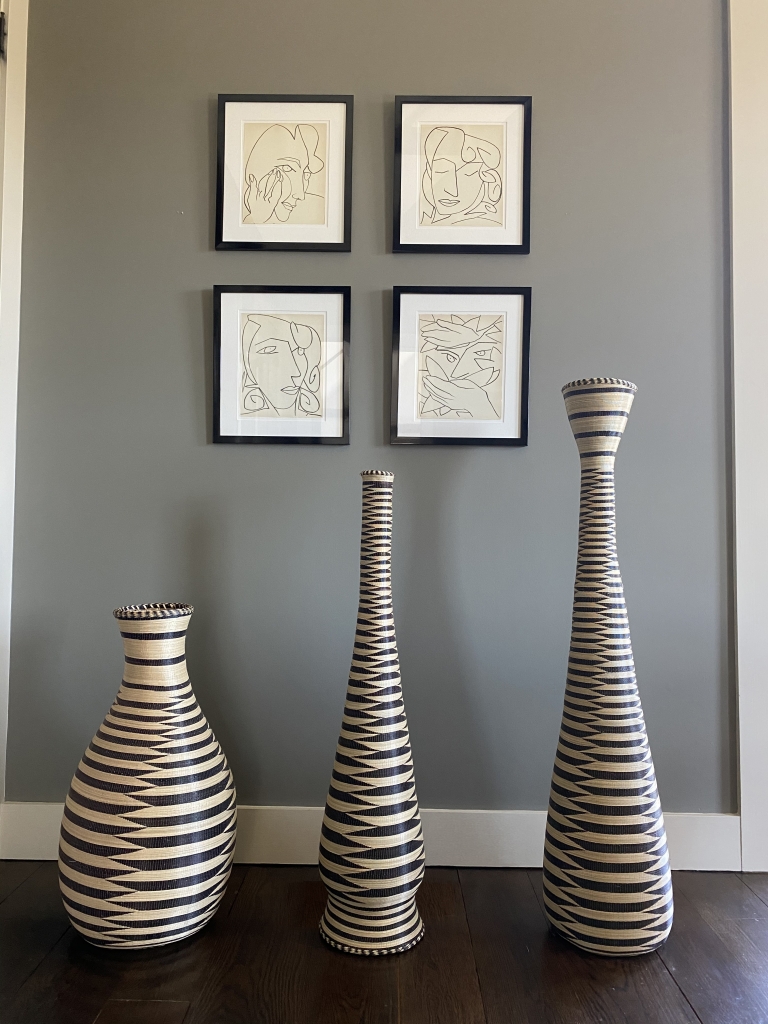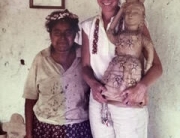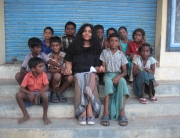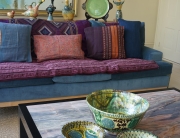
There’s a bit of sacredness involved anytime I invite an object into my home, particularly a decorative element. It isn’t allegiance to a style or movement, or that I’m a ‘collector’ of particular things. I’m speaking of energy — the magnetism of an object generated by its beauty, function, and the story that led up to its creation. This energy is why I am an enthusiastic lover of all things craft. It’s also why my living room is punctuated with a number of organically shaped baskets from the Rwandan collective Gahaya Links. Unique, beautiful, magnificently constructed, sold in service of a very worthy cause… These pieces bring with them a meaningful story and inspire me daily.
I first encountered Gahaya Links’s showstopping, organically-shaped baskets at the Folk Art Market about fifteen years ago. I was working at Donna Karan at the time. Peter Speliopoulos, the creative director, my boss, and dear friend, invited me to join him in Santa Fe, having noted my vocal enthusiasm for craft. He was right; I immediately fell in love with the market — bringing together hundreds of folk artists from around the world to display the best of their efforts. It was then that I first met the most inspiring woman, Judy Espinar, who had been key in establishing the market. She had been collecting folk art and traveling the world for years, meeting with artisans and craftspeople, then bringing these people to New Mexico to show their work. These purveyors then return to their villages with their profits — oftentimes to third-world conditions — and with that money, they could do so much for their communities.
That first year I bought a few small scales pieces of these beautiful, curious baskets from Gahaya Links. They currently sit on my bedroom cabinet here in Florence. Initially, I fell in love because of their beauty. Then, last July, their significance was magnified tenfold. I was at the market once again (it has become an annual pilgrimage), and was struck by the size and the color and shapes of these baskets. I was thrilled to learn that these were the same artisans who made my first acquisitions fifteen years back. I had to know more, and a beautiful, joyful representative of the collective, Janet Nkubana, told me the story of how they came to exist.
What I heard that day touched me so deeply. It turns out that Gahaya Links was set up as a collective in the aftermath of the Rwandan genocide. The women from the Hutu and Tutsi tribes had essentially lost all of their men. They had no way to support themselves, to feed their children, to carry on. In this dark time, they had to band together and survive. One thing they did have was a talent to weave this specific style of basket. So, out of necessity, they began to create them together.
The material that they use is very specific to the region. It’s a very thin, brittle straw, woven very finely via 30,000 stitches each — making the baskets lightweight, secure, strong, and durable. Their technique yields organic, feminine shapes, while their dyes yield deep, luxurious colors. It was thrilling to see them at this scale… Some of them are six feet tall. I am now the proud owner of nine of them, with plans for more, of course!
I take great comfort and pleasure in my home environment. As mentioned earlier, nothing stays in my space by accident. So there among my mid-century modern pieces, Pierre Chapeau chairs, a Mario Bellini couch, Navajo blankets, and artwork by Robert Motherwell and Robert Rauschenberg are these wondrous baskets from Rwanda. They are the things that every one of my guests are drawn to… Not solely because of their beauty. It is their essence, the vibration they emanate that communicates their significance and history.
The handmade is a huge concept for me. I am actively employing the concept in my work at Ferragamo, using Gahaya Links as inspiration. It makes me feel wonderful to honor these women through my patronage and with the nods to them in my designs. The money they make feeds their villages, allows them financial freedom, makes them empowered leaders in their communities.
They are but one of the countless examples of good brought to the world through handcraft. It is a thrill to explore the work of folk artisans, and endlessly rewarding to know how their profits can impact their daily lives. It is a particular honor to tell the story of the women of Gahaya Links. Living among their work reminds me, in the subtlest of ways, to be my best self. I can’t wait to see what they have on display next year.
****





